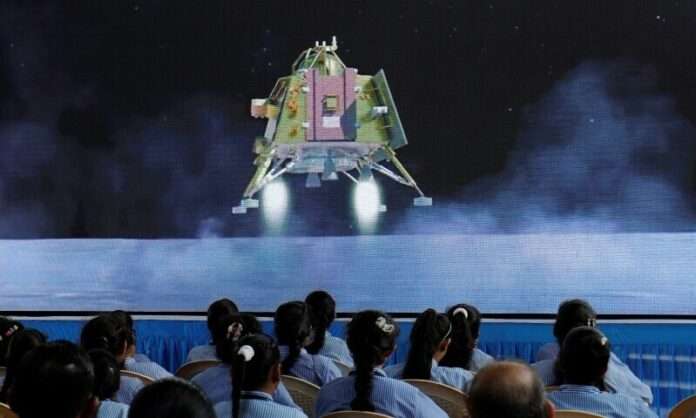A day after becoming the first country to make a craft landing near the largely unexplored lunar south pole, India started using a rover to explore the moon’s surface on Thursday.
Hours after the most recent achievement in India’s ambitious but budget-friendly space programme sparked huge celebrations all over the country, Pragyan, or “Wisdom” in Sanskrit, rolled out of the lander.
“Rover ramped down the lander, and India took a walk on the moon! On Thursday, the Indian Space Research Organisation (ISRO) published a message on X, formerly known as Twitter.

Over the course of its two-week journey, the six-wheeled, solar-powered rover will wander around the largely uncharted area and transmit pictures and scientific data.
Just a few days had passed when the Chandrayaan-3 (“Mooncraft-3”) mission successfully touched down on the moon.
Additionally, it comes four years after the previous Indian lunar mission, which was seen at the time as a major setback for its space programme, failed during its final descent.
However, India is steadily catching up to more developed spacefaring countries in terms of accomplishments.
Since its launch in front of thousands of cheering spectators nearly six weeks ago, Chandrayaan-3 has captured the public’s attention.
Politicians put on Hindu rites to pray for the mission’s success, and schoolchildren watched live broadcasts of the mission’s final descent in their classrooms.
The successful lunar landing, which had previously only been accomplished by the United States, Russia, and China, was hailed as a victory for “all of humanity” by Prime Minister Narendra Modi on Wednesday.
The landing was praised as “super cool” by Elon Musk, whose company SpaceX is the industry leader in commercial space launches.

In comparison to the Apollo missions from the 1960s and 1970s, which arrived on the moon in a matter of days, the Indian mission took a lot longer to get there.
Chandrayaan-3 had to orbit the Earth several times to pick up speed after being launched on a less potent rocket before starting its month-long journey.
Future ambitions
India has a relatively low-budget space programme, but it has expanded significantly in size and momentum since it launched its first probe into lunar orbit in 2008.
Chandrayaan-3’s cost of $74.6 million is significantly less than that of many missions from other nations, which is evidence of India’s cost-effective space engineering.
According to experts, India can keep costs low by cloning and adapting existing technology, in addition to having a large pool of highly skilled engineers who are paid less than half what their counterparts abroad do.






